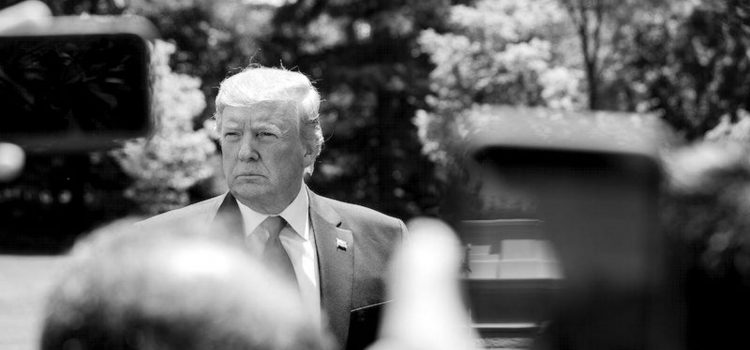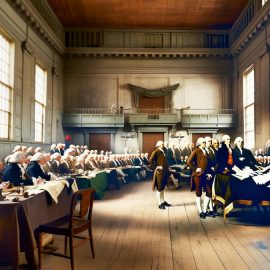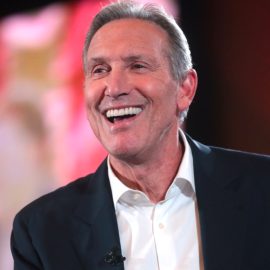

This article is an excerpt from the Shortform book guide to "Confidence Man" by Maggie Haberman. Shortform has the world's best summaries and analyses of books you should be reading.
Like this article? Sign up for a free trial here.
Where does Donald Trump’s racism come from? What factors contributed to his tendency to stereotype by race?
Donald Trump’s racism comes from a segregated upbringing and a lack of exposure to minority communities. Understanding where this comes from offers insight into how it can be addressed.
Learn where Donald Trump’s racism comes from and why he has the beliefs that he does.
A Template for Fighting Criticism—and Attacking Critics
The Trump Organization faced legal trouble early in Trump’s career when it was sued by the Justice Department in 1973 for rental discrimination against Black tenants. For Donald Trump, racism came to the forefront of public discussion during this time.
In response, the Trumps engaged the services of Roy Cohn, a legendary New York lawyer and powerbroker. The connection to Cohn paid off: Despite having to sign a legal agreement pledging no further discriminatory practices, the Trump Organization didn’t have to admit to any wrongdoing. Furthermore, Cohn’s response to the lawsuit, marked by furious pushback and relentless counterattacks, would set the template for Donald’s future responses to criticism and opposition.
(Shortform note: The 1973 federal lawsuit against the Trumps for alleged racial discrimination would continue to cause headaches for Trump throughout his career. During the 2016 presidential debate, his opponent, Democratic candidate Hillary Clinton, highlighted the lawsuit as evidence of his racism and untrustworthiness. Moreover, despite Trump’s defense in that debate that the lawsuit’s settlement didn’t require admission of wrongdoing from the Trump Organization, some sources contend that there were tacit admissions of wrongdoing that the firm was required to correct—for example, the settlement required the Trumps to place ads welcoming Black applicants and familiarize themselves with the Fair Housing Act.)
Seeing the World Through Stereotypes
Trump’s upbringing in a highly segregated New York City instilled in him stereotypes about people of color and other historically marginalized groups—stereotypes that stayed with him throughout his life. When he began working with Black and Brown communities in the 1970s and 1980s, he saw them primarily as interest groups to be won over, rather than communities of individuals with agency. Acting from this perspective, he cultivated purely transactional relationships with Black athletes and leaders—often pointing to these associations as evidence of his supposed acceptance within the Black community.
| Institutional vs. Individual Racism Trump’s insistence that relationships with individual people of color should shield him against any charges of racial animosity speaks to the distinction between institutional and individual racism. In White Fragility, Robin DiAngelo defines institutional racism as being about imbalances in the social, political, cultural, economic, and legal power structures of the US. White people, as the group that has always wielded power in America, derive enormous material and psychological advantages from this racist organization of society. And Trump, like all white people who come of age in a highly race-conscious society, would be marked by the assumptions inherent in an institutionally racist society, even if he didn’t believe himself to be. By pointing to his relationships with individuals of color as evidence of his non-racism, Trump may have been making a mistake that DiAngelo argues many white people make—narrowly defining racism as an individual or personal character trait. For them, racism is something mean and cruel done by mean and cruel people, usually involving explicit and open hostility toward people of color. But, argues DiAngelo, the discussion of whether an individual white person is “racist” misses the point about how racism works. |
Solidifying Views on Race and Crime
Haberman writes that the 1980s in New York City provided Trump with what he saw as ample confirmation of his stereotyped view of the world. During this time, the city was plagued by high crime rates, fueled by the crack epidemic and the resulting violent street crime. The conversation around crime was highly racialized, with violent crime largely associated in the public mind with African Americans. Trump, emulating tough-on-crime political figures like Philadelphia Mayor Frank Rizzo, publicly advocated harsh and punitive policies against criminals. This, she writes, was to become a hallmark of his later political style.
| Leaded Gasoline and the Mid-20th Century Crime Surge Some scholars have argued that the rise and fall of violent crime in the US can be linked to the prevalence of lead exposure in children. They note the correlation between elevated levels of lead in the environment, particularly from leaded gasoline, and the surge in crime rates during the mid-20th century. The central argument is that increased lead exposure in childhood contributes to cognitive impairment and behavioral issues, potentially leading to criminal behavior later in life. Research studies have investigated the neurotoxic effects of lead, emphasizing its impact on brain development, impulse control, and decision-making. The hypothesis suggests that as a generation born in the 1940s and 1950s (exposed to high levels of lead) grew up, they were vastly more likely to become criminals when they reached young adulthood in the 1960s, 1970s, and 1980s. Conversely, the decline in crime rates in the US since the 1990s correlates with the phasing out of leaded gasoline and subsequent reduction in environmental lead levels. |

———End of Preview———
Like what you just read? Read the rest of the world's best book summary and analysis of Maggie Haberman's "Confidence Man" at Shortform.
Here's what you'll find in our full Confidence Man summary:
- How Donald Trump's NYC upbringing shaped his worldview
- Why Trump's media savvy was crucial to his unexpected 2016 victory
- A look at the 2020 election, Trump's impeachment, and the insurrection at the Capitol


![Is the World Getting Better or Worse? [Statistics] Is the World Getting Better or Worse? [Statistics]](https://www.shortform.com/blog/wp-content/uploads/2019/07/factfulness-earth-270x270.jpg)



